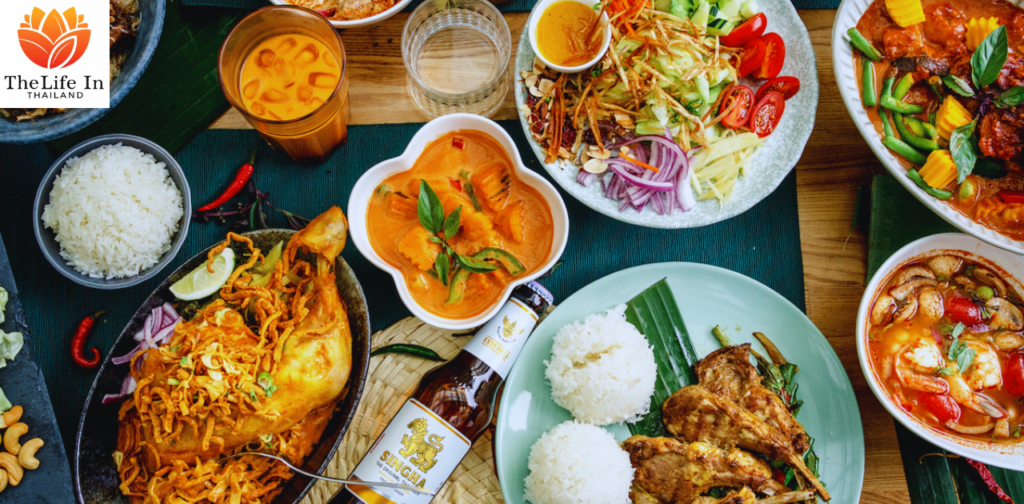Embark on a culinary adventure through the vibrant and diverse flavors of Thai Esan cuisine. Originating from the northeastern region of Thailand, Thai Esan cuisine offers a tantalizing fusion of indigenous culinary traditions, regional influences, and unique ingredients. In this comprehensive exploration, we delve deeper into the rich history, key ingredients, iconic dishes, culinary traditions, and festivals that define the essence of Thai Esan gastronomy.


Historical and Cultural Significance
The roots of Thai Esan cuisine are deeply intertwined with the history and culture of the Isan people, who have inhabited the northeastern region of Thailand for centuries. Historically, Isan has been influenced by neighboring Laos and Cambodia, as well as indigenous Thai culinary practices, resulting in a culinary tradition that is both distinct and diverse. Esan cuisine reflects the resourcefulness of its people, who have adapted their dishes to suit the arid climate and limited agricultural resources of the region.
Key Ingredients and Flavors
Central to the vibrant flavors of Thai Esan cuisine are its key ingredients, which reflect the region’s agricultural abundance and culinary heritage. Sticky rice, or “khao new,” is the staple carbohydrate and is served with almost every meal, either as a side dish or as a main component of dishes like “sticky rice with grilled chicken” (kai yang). Fresh herbs and aromatics such as lemongrass, galangal, and kaffir lime leaves lend Esan dishes their distinctive fragrance and flavor profile, while chili peppers provide the characteristic heat that is synonymous with Thai cuisine.
Other essential ingredients in Thai Esan cooking include fish sauce, tamarind paste, palm sugar, and fermented fish (plaa raa), which add depth and complexity to dishes such as larb (minced meat salad) and som tum (green papaya salad). The use of fermented and preserved ingredients is a hallmark of Esan cuisine, reflecting the region’s culinary ingenuity in preserving food for lean times and enhancing its flavor.
Iconic Thai Esan Dishes
Thai Esan cuisine boasts a diverse array of iconic dishes that showcase the region’s bold flavors, vibrant colors, and unique cooking techniques. Som tum, or green papaya salad, is perhaps the most famous Esan dish, featuring shredded green papaya, chili peppers, lime juice, fish sauce, and a medley of herbs and vegetables. Larb, a minced meat salad flavored with lime juice, fish sauce, and roasted rice powder, is another beloved Esan specialty, available in various iterations including larb moo (pork) and larb gai (chicken).
Other notable Esan dishes include:
Nam Tok: A spicy beef salad made with grilled beef, roasted rice powder, shallots, mint, and chili flakes.
Gaeng Om: A hearty soup made with pork or chicken, vegetables, and aromatic herbs such as lemongrass and galangal.
Pla Ra: Fermented fish paste, often used as a condiment or seasoning in Esan cooking.
Culinary Traditions and Rituals
Thai Esan cuisine is not just about the food—it is also about the communal rituals and traditions that surround it. One such tradition is the practice of “kin khao,” or eating rice, which symbolizes the importance of food restaurants and sustenance in Esan culture. Meals are typically enjoyed communally, with family members and friends sharing dishes served on a mat or low table, fostering a sense of togetherness and community.
Esan culinary traditions are also celebrated during festivals and special occasions, where food plays a central role in bringing people together and honoring cultural heritage. The Bun Bang Fai Rocket Festival, for example, is a traditional Esan festival held annually to mark the beginning of the rainy season. The festival features colorful parades, traditional music and dance performances, and spectacular rocket competitions, accompanied by plenty of food and drink.
Conclusion
In conclusion, Thai Esan cuisine offers a captivating journey through the flavors, aromas, and cultural heritage of northeastern Thailand. From its humble origins to its vibrant present-day offerings, Esan cuisine continues to enchant food enthusiasts with its bold flavors, fresh ingredients, and time-honored cooking techniques. Whether you’re savoring a bowl of som tum at a local market or sampling regional specialties at a festive celebration, exploring the world of Thai Esan cuisine is sure to be a memorable and rewarding experience.




